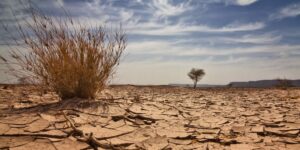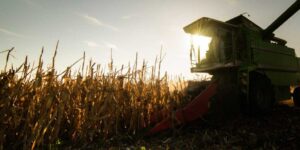Salt Stress and its impact on crop productivity in Pakistan
Rahil Shahzad, Shakra Jamil, Dr. Sajid UR-Rahman and Dr. Muhammad Zaffar Iqbal
Salinity may be defined as the excessive accumulation of salts up to that level which negatively affect the crop production.
The salt affected salts are classified into three categories including the saline, sodic, and saline sodic. For sodic soils word alkali was formally used but now it is discouraged due to ambiguity.
Losses in production worldwide:
Agricultural productivity is severely affected by soil salinity because salt levels are harmful to plant growth. Estimates showed that at present about 20 per cent of the irrigated land in the world is affected by salinity. The loss of cultivable land due to salinity is likely to increase over the next 20 years and impinge on world food supplies.
Losses in Pakistan due to salinity:
Crops yield losses in Pakistan due to water-logging and salinity are feared to reach Rs. 880 million ($28.5 million) this year, while total annual economic damage is estimated at $300 million. Yield losses of wheat in moderately saline areas of the country average about 65 per cent.
Why need to improve the production in salt affected salts:
Gain productivity through green revolution has reached the ceiling, whereas the world population continues to grow. Therefore, improving food crops yield in normal and less productive soils, including saline soils, is a dire need to feed the ever-increasing population.
What is indication of salt affected areas?
Bare ground or a whitish crust on the row peaks is an indication of the salinity of the soil. The solubility of calcium sulphate (gypsum) can be used as a standard for comparing salinity levels. Salts, more soluble than gypsum, are considered to be the cause of salinity. Carbonate salts are most commonly found in saline soils. Patches in the field with very high sodium levels are often called alkali spots which restrict plant growth. These spots usually lack good soil structure as it causes clay and organic matter to disperse, leading to soil compaction and problem of root growth.
Mechanism of lowering the production:
Sodic soils can affect plant growth directly by the caustic effects of high alkalinity and toxicity of sodium carbonate, bicarbonate and other anions thereby causing damages to plant metabolism and nutrition. If only 15 per cent or more of a soil’s clay adsorption sites are occupied by sodium, it can restrict root growth and even make tillage much difficult. When these soils dry, the sodium-clay particles settle into dense layers that are impenetrable to plant roots hence limiting the emergence of seedlings. High salinity and high electrical conductivity (EC) of soil causes plant cell dehydration, reduces plant growth and possibly death in less tolerant plants. High salt concentration affects crop growth in three different ways. First, it decreases the osmotic potential of soil solution creating water stress in plants. Second, it causes severe ion toxicity, since Na+ is not readily sequestered into vacuoles. Finally, the interactions of salts with mineral nutrients may result in nutrient imbalances and deficiencies.
How salinity affects the living standards?
Soil salinity is a social problem and affects all aspects of family life such as housing, health, education and income of the affected people. Therefore, the success of saline agriculture approach requires a change in social response to the problem as much as it requires scientific and technical breakthrough. Results of a survey conducted in the central Punjab revealed wide variations in the living standard and social status of the households of affected and non-affected areas by salinity. As for example, about 56 per cent of males and 91 per cent of females were illiterate in salt-affected villages, compared to 51 per cent and 77 per cent in the unaffected villages. People in salt-affected villages had worse access to basic healthcare, basic facilities, and ownership of household goods like refrigerators, televisions, radios and fans were substantially less.
Management practices:
Management: Saline soil management includes careful designing of irrigation systems and use of less saline water, selection of salinity-tolerant plant species, flushing salts from soil surface during germination and early seedling growth to encourage survival. It also includes reduction in evaporative discharge by maintaining soil tilth and using mulches to reduce evapo-transpiration, salt accumulation and sub-surface drainage (where feasible) to lower high saline water tables or flush field surfaces of salts. Avoiding excess irrigation unless the soil is to be flooded to leach soluble salts while frequent light irrigations help keep salts dilute. Using drought-tolerant plants and disrupting clay-pans by tillage reduces soil compaction. Sodic soils may be improved by replacing the adsorbed sodium with calcium. But this procedure is costly as several tons of gypsum per acre is needed to convert part of the caustic alkali carbonates into sulphates. The soil must be kept moist to hasten the reaction once gypsum is cultivated into the surface layer (not plowed under).Irrigation water should be increased after applying gypsum in order to hold the gypsum in the soil solution. If the salinity level is too high for the crop to grow, salts may be removed by leaching the soil with clean water. Applying 6, 12 and 24 inches of water will reduce salinity levels by about 50 per cent, 80 per cent and 90 per cent, respectively. The manner in which water is applied is important; water must be drained through the soil rather than run off the surface. Internal drainage is imperative and may require deep tillage to break up any restrictive layer impeding water movement. Sprinkler irrigation systems generally allow better control of water application rates. However, flood irrigation can be used if sites are leveled and water application is controlled. Soil samples should be taken after leaching the site for analysis to determine whether salinity level is suitable for planting. Later, the land may be irrigated again to get rid of some of the sodium sulphate that is formed in the chemical reaction but still carbonate remains as a calcium salt.
Saline-agriculture:
In recent years, there has been an increasing recognition of the importance of options for living with salinity due to economic and/or environmental limitations (e.g. inadequate drainage, high evapo-transpiration etc.). Many now realise that we really don’t have a choice between salinity and no salinity, but that we do have a choice between being prepared or unprepared for salinity. The early acceptance of this reality will help the community in a variety of ways, including support for development and testing of improved system for making productive use of Stalinized resources, evaluating private and public benefits from productive use of resources that are already Stalinized and saving costs on fruitless attempts to prevent salinity in situations where it cannot be prevented. In this situation, plants having tolerance against high salinity level may be selected. Although, the plant-based options for saline land have many advantages over perennials plants, farmers, still are reluctant to switch to other land uses unless they are well aware about this system and its profitability. Establishing salt-tolerant species on salt-affected areas does not involve the same sort of sacrifice. Therefore, provided the establishment costs are low enough and/or adequate productivity can be demonstrated, the prospects for widespread adoption of new salt-tolerant plants for economic production on salt-affected land appear good. Our arid and semi-arid areas are more suitable for salt tolerant plants (field crops, forages and trees) and require a precise management and production system. These plants have the ability to contribute to the national income through additional production of food from salt-affected lands and also provide fodder at a time of shortage to sustain livestock production. Some of these plants are eucalyptus, kallar grass, Rhodes grass, frash, desi and Australian kikar and many wood and fodder species. These plants have been extensively adopted by farmers of Australia, Spain, Israel and others salt-affected areas of the world. Some halophytic plants (salt-loving) are more tolerant that can survive in soils with more than 0.5 per cent soluble salts by weight.
References:
- Soil science by A Rashid chapter no 16 “soil salinity, sodicity and water logging. Page no 471-506
- Pakistan science foundation blog 28 january 2013 article Saline Agriculture in Pakistan-A Profitable Way to Tackle Salinity








